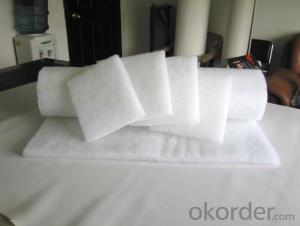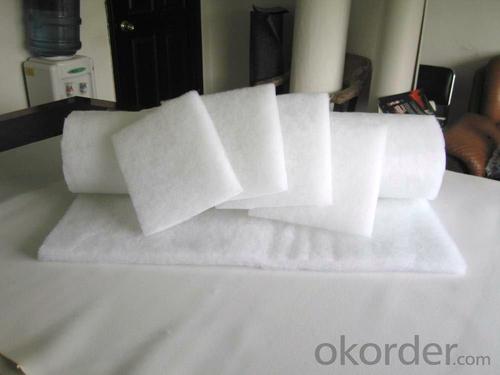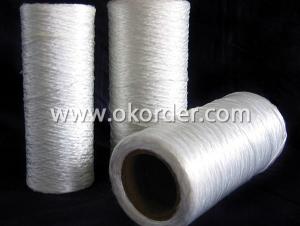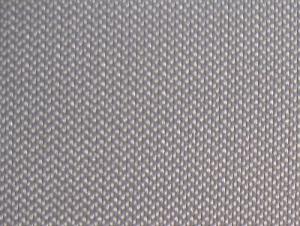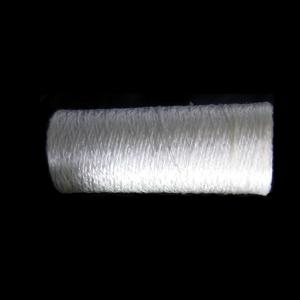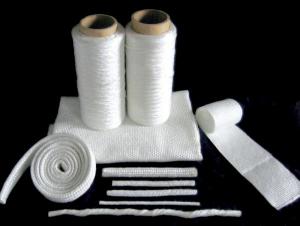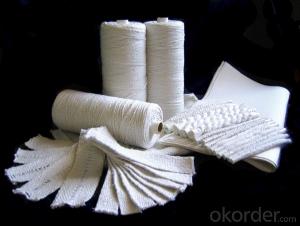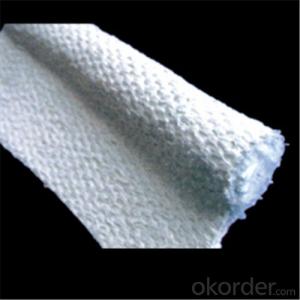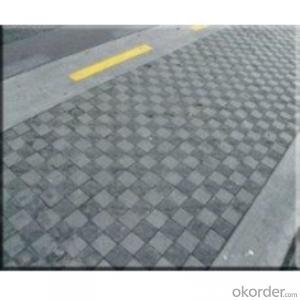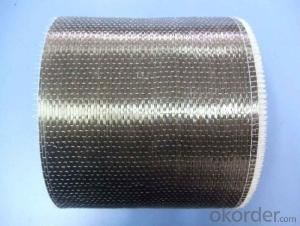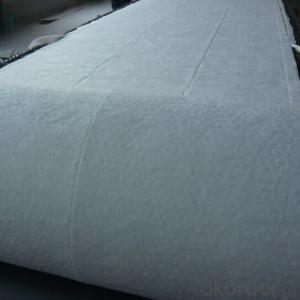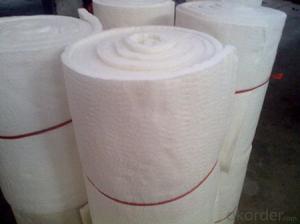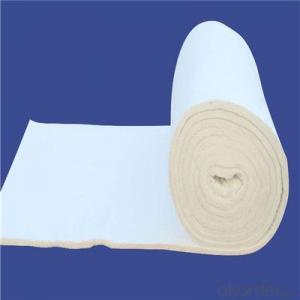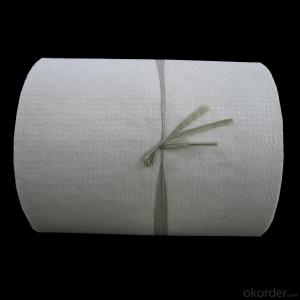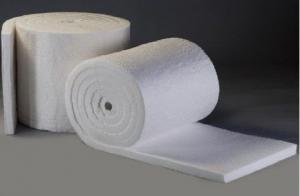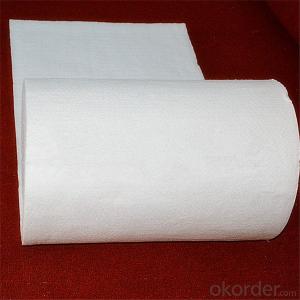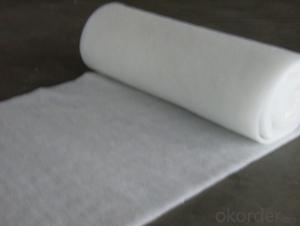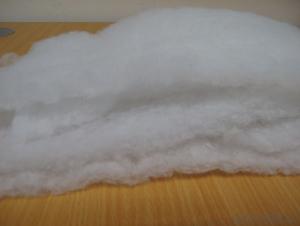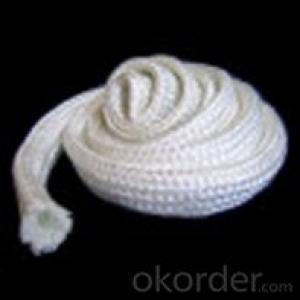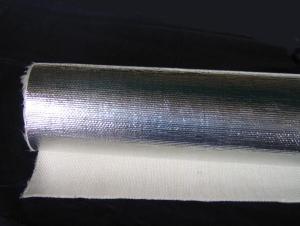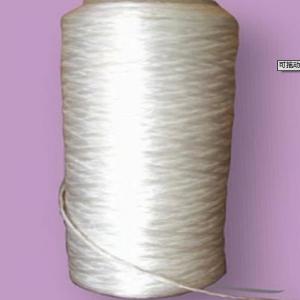Glass Fiber Textiles - Pure White Ceramic Fiber Blanket with Low Price
- Loading Port:
- Shanghai
- Payment Terms:
- TT OR LC
- Min Order Qty:
- 1 m.t.
- Supply Capability:
- 111 m.t./month
OKorder Service Pledge
OKorder Financial Service
You Might Also Like
Specifications
Low thermal conductivity
Excellent insulating effect
Good chemical stability
Stable high temperature performance
Easy to cut
Features:
1.Needled blanket
2.Non-combustible
3.Low density and low thermal conductivity
4.Excellent chemical stability
5.Resilience and resistance to thermal shock
6.Flexible and easy to cut or install
7.Good sound insulation and erosion resistance
8.Contain no organic binder
9.Asbestos free
10.Blanket density:96kg/m3,128kg/m3
11.Other thickness or density variations are subject to order
12.Available size:7200mm*610mm*10-50mm
13.Additional coating or coverings according to order
14.Package:520 cartons in a 40HC container,440 cartons in a 40GP container,220 cartons in a 20GP container
Application:
This high-quality fiber blanket has excellent processing or construction strength and anti-high temperature
performance which can meet demands for the application of heat insulation on various hot faces and cold
faces in different furnaces. It is a new type of refractory and insulating materials provided by our company
for customers. The product is white with formal dimension and integrates the performance of heat insulation
and thermal preservation together.
1. The insulating material for wall lining and back lining of industrial furnaces and heating devices
2. Insulating materials of high-temperature equipment
3. Material to produce module/folded module
Physical and chemical composition
Common | Standard | Pure | High Aluminium | Zirconium | ||
Classification temperature(°C) | 1100 | 1260 | 1260 | 1360 | 1430 | |
Work temperature(°C) | <1000 | 1050 | 1100 | 1200 | 1350 | |
Color | White | Pure white | Pure white | Pure white | Pure white | |
Density (kg/m3) | 96 | 96 | 96 | 128 | 128 | |
Permanent linear shrinkage(%)(after24 hours,density 128kg/m3) | -4 | -3 | -3 | -3 | -3 | |
Thermal conductivity (w/m.k) density 128kg/m3)
| 0.09(400°C) | 0.09(400°C) | 0.09(400°C) | 0.132(600°C) | 0.76(600°C) | |
Tensile strength (Mpa) density128kg/m3) | 0.08-0.12 | 0.08-0.12 | 0.08-0.12 | 0.08-0.12 | 0.08-0.12 | |
Chemical Composition (% | AL2O3 | 44 | 46 | 47--49 | 52-55 | 39-40 |
AL203+SIO2 | 96 | 97 | 99 | 99 | - | |
AL2O3+SIO2+Zro2 | - | - | - | - | 99 | |
Zro2 | - | - | - | - | 15-17 | |
Fe2O3 | <1.2 | <1.0 | 0.2 | 0.2 | 0.2 | |
Na2O+K2O | ≤0.5 | ≤0.5 | 0.2 | 0.2 | 0.2 | |
Size (mm) | Common 7200*610*10-50 others up to buyer | |||||
- Q: Can glass fiber textiles be used in wound care products?
- Yes, glass fiber textiles can be used in wound care products. Glass fiber textiles offer several benefits in wound care applications. Firstly, they have a high tensile strength and provide excellent mechanical support to wounds. This helps to keep the wound area stable and reduces the risk of further damage or infection. Additionally, glass fiber textiles have a high absorbency rate, allowing them to effectively manage wound exudate and promote a moist wound healing environment. Moreover, glass fiber textiles have low allergenic potential, making them suitable for individuals with sensitive skin or allergies. They are also non-toxic and do not cause irritation, further enhancing their suitability for wound care products. Furthermore, glass fiber textiles have antimicrobial properties, which help to prevent the growth of bacteria and reduce the risk of infection in wounds. This is especially important in wound care, where infections can significantly delay the healing process. It is worth mentioning that glass fiber textiles are available in various forms, such as woven fabrics, non-woven mats, and knitted fabrics, allowing for versatility in wound care product design and application. They can be used as wound dressings, bandages, or as reinforcement materials in wound closure systems. However, it is important to note that glass fiber textiles should be used under the guidance of healthcare professionals, as they may require specific application techniques and regular monitoring. Additionally, individual patient factors and wound characteristics should be considered when selecting wound care products, including glass fiber textiles, to ensure optimal outcomes.
- Q: Can glass fiber textiles be used in reinforcement of hemp fibers?
- Yes, glass fiber textiles can be used in the reinforcement of hemp fibers. Glass fiber textiles are known for their high strength and stiffness, making them ideal for reinforcing materials that require additional structural support. Hemp fibers, on the other hand, are known for their natural strength and durability. By combining glass fiber textiles with hemp fibers, it is possible to enhance the overall strength and performance of the hemp fibers. This combination can be particularly beneficial in applications where a high level of strength and durability is required, such as in the production of composite materials, construction materials, or automotive components. Additionally, the use of glass fiber textiles can also help to improve the dimensional stability and resistance to moisture of the hemp fibers, further enhancing their overall performance.
- Q: How do glass fiber textiles compare to natural fibers in terms of sustainability?
- Glass fiber textiles and natural fibers exhibit notable differences in sustainability. Whereas natural fibers, like cotton or hemp, derive from renewable resources, glass fiber textiles are produced using non-renewable materials such as sand and limestone. The extraction and processing of these raw materials for glass fibers impose significant environmental consequences, such as energy consumption and greenhouse gas emissions. Moreover, the manufacturing of glass fiber textiles necessitates substantial amounts of energy and water, thereby exacerbating their environmental footprint. Conversely, natural fibers can be cultivated with minimal water and energy inputs, often benefiting local agricultural communities and reducing reliance on synthetic materials. Furthermore, glass fiber textiles lack biodegradability, leading to their persistence in the environment for extended periods and contributing to waste accumulation and potential pollution. In contrast, natural fibers, being organic in nature, typically biodegrade naturally over time, thereby minimizing their impact on landfills and ecosystems. However, it is worth noting that the sustainability of glass fiber textiles can be enhanced through recycling and the adoption of more energy-efficient manufacturing processes. By recycling glass fibers, the demand for virgin materials can be reduced, consequently lowering environmental impacts. Additionally, advancements in technology and production methods can aid in diminishing the energy and water consumption associated with glass fiber production. In conclusion, while glass fiber textiles possess certain advantages such as strength and durability, they generally yield a higher environmental impact in terms of sustainability compared to natural fibers. Conversely, natural fibers are renewable, biodegradable, and require fewer resources for production. Nonetheless, improvements in manufacturing practices and recycling endeavors can augment the sustainability of glass fiber textiles, thereby rendering them a more environmentally friendly option in the future.
- Q: Are glass fiber textiles resistant to staining or discoloration from food or beverages?
- Yes, glass fiber textiles are generally resistant to staining or discoloration from food or beverages. Glass fibers are non-absorbent and do not retain liquids, which makes them less prone to staining compared to other textile materials. Additionally, glass fibers are often treated with special coatings or finishes that further enhance their resistance to staining and discoloration. However, it is important to note that prolonged exposure to certain highly pigmented or acidic substances may still cause some level of staining or discoloration on glass fiber textiles. It is always recommended to clean any spills or stains promptly to maintain the overall appearance and longevity of the fabric.
- Q: Can glass fiber textiles be used for insulation?
- Glass fiber textiles, or fiberglass, can be utilized for insulation purposes. These textiles are crafted from delicate glass strands that are interwoven into a fabric-like material. This particular material boasts remarkable thermal insulation attributes as a result of the air pockets formed between the fibers, effectively inhibiting the rapid transfer of heat. Commonly employed as insulation in constructions, appliances, and industrial equipment, glass fiber textiles offer numerous advantages. They are lightweight, non-flammable, and exhibit excellent moisture resistance, rendering them an optimal choice for insulation applications. Moreover, glass fiber textiles possess considerable tensile strength and durability, enabling them to endure diverse environmental conditions while sustaining their insulation qualities over an extended period of time.
- Q: How do glass fiber textiles compare to aramid textiles?
- Glass fiber textiles and aramid textiles have different properties and applications. Glass fiber textiles are known for their excellent strength, high temperature resistance, and electrical insulating properties. They are commonly used in industries such as automotive, aerospace, and construction. Aramid textiles, on the other hand, are known for their exceptional heat resistance, high tensile strength, and flame retardancy. They find applications in industries like military, firefighting, and protective clothing. While both textiles have their unique advantages, the choice between glass fiber and aramid textiles ultimately depends on the specific requirements of the application.
- Q: How do glass fiber textiles perform in terms of fire resistance?
- Glass fiber textiles have excellent fire resistance properties. Due to their inorganic nature, they do not readily burn or support the spread of flames. They have a high melting point and do not release toxic smoke or gases when exposed to fire. This makes them a preferred choice in applications where fire safety is a concern, such as in protective clothing, insulation materials, and building materials.
- Q: How do glass fiber textiles resist staining?
- Glass fiber textiles resist staining due to their smooth surface and non-absorbent nature. The composition of glass fibers makes it difficult for stains to penetrate or adhere to the fabric, allowing for easy removal of any spills or marks.
- Q: What are the different sewing techniques for glass fiber textile?
- Some of the different sewing techniques for glass fiber textile include straight stitching, zigzag stitching, overlock stitching, and double-needle stitching. These techniques are used to join pieces of glass fiber fabric together and create strong and durable seams. Additionally, specialized sewing techniques like binding, hemming, and topstitching can also be used to finish the edges and add decorative elements to glass fiber textile projects.
- Q: Can glass fiber textiles be used in aircraft interiors?
- Yes, glass fiber textiles can be used in aircraft interiors. Glass fiber textiles are known for their excellent strength-to-weight ratio, making them suitable for various applications in the aerospace industry. In aircraft interiors, glass fiber textiles can be used for upholstery, seat covers, curtains, and carpets. They offer several advantages, such as fire resistance, durability, and ease of maintenance. Additionally, glass fiber textiles can be woven into different patterns and designs, allowing for customization and aesthetic appeal in the aircraft cabin.
Send your message to us
Glass Fiber Textiles - Pure White Ceramic Fiber Blanket with Low Price
- Loading Port:
- Shanghai
- Payment Terms:
- TT OR LC
- Min Order Qty:
- 1 m.t.
- Supply Capability:
- 111 m.t./month
OKorder Service Pledge
OKorder Financial Service
Similar products
Hot products
Hot Searches
